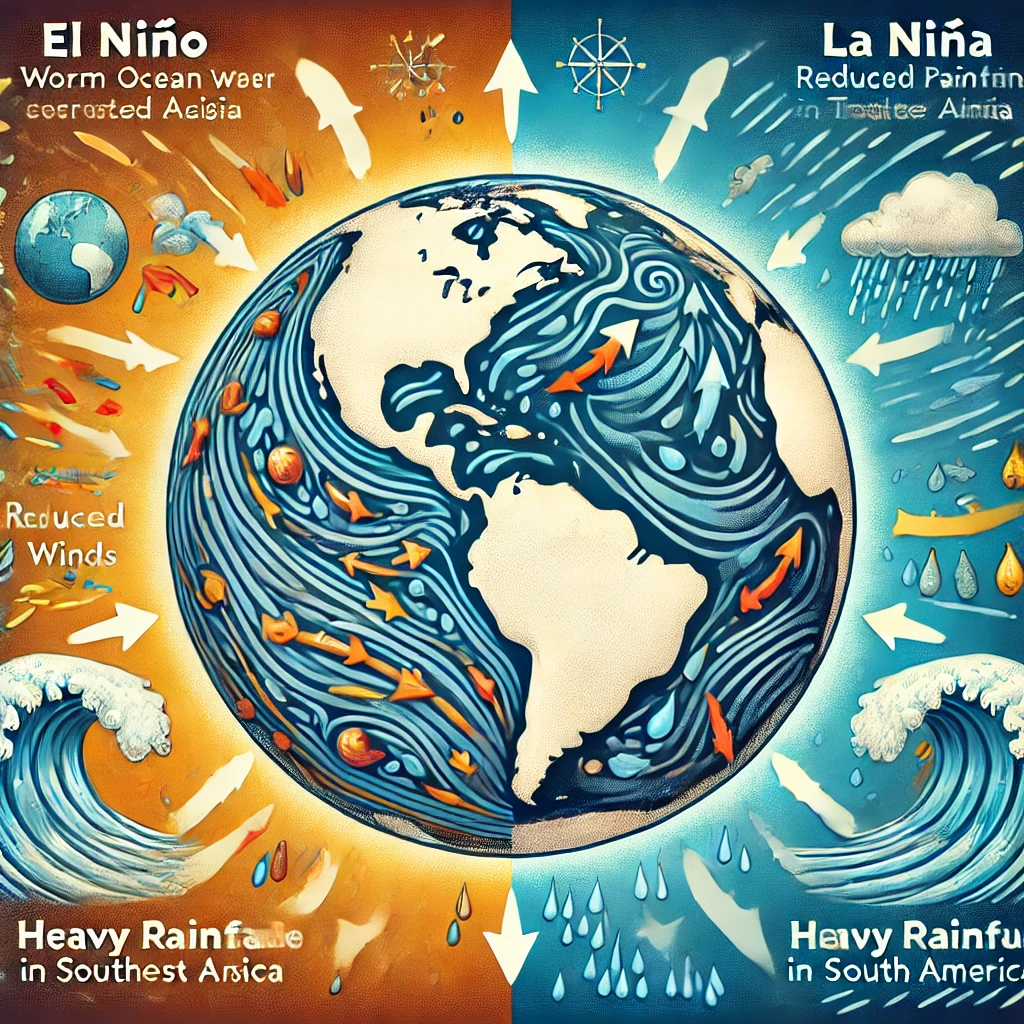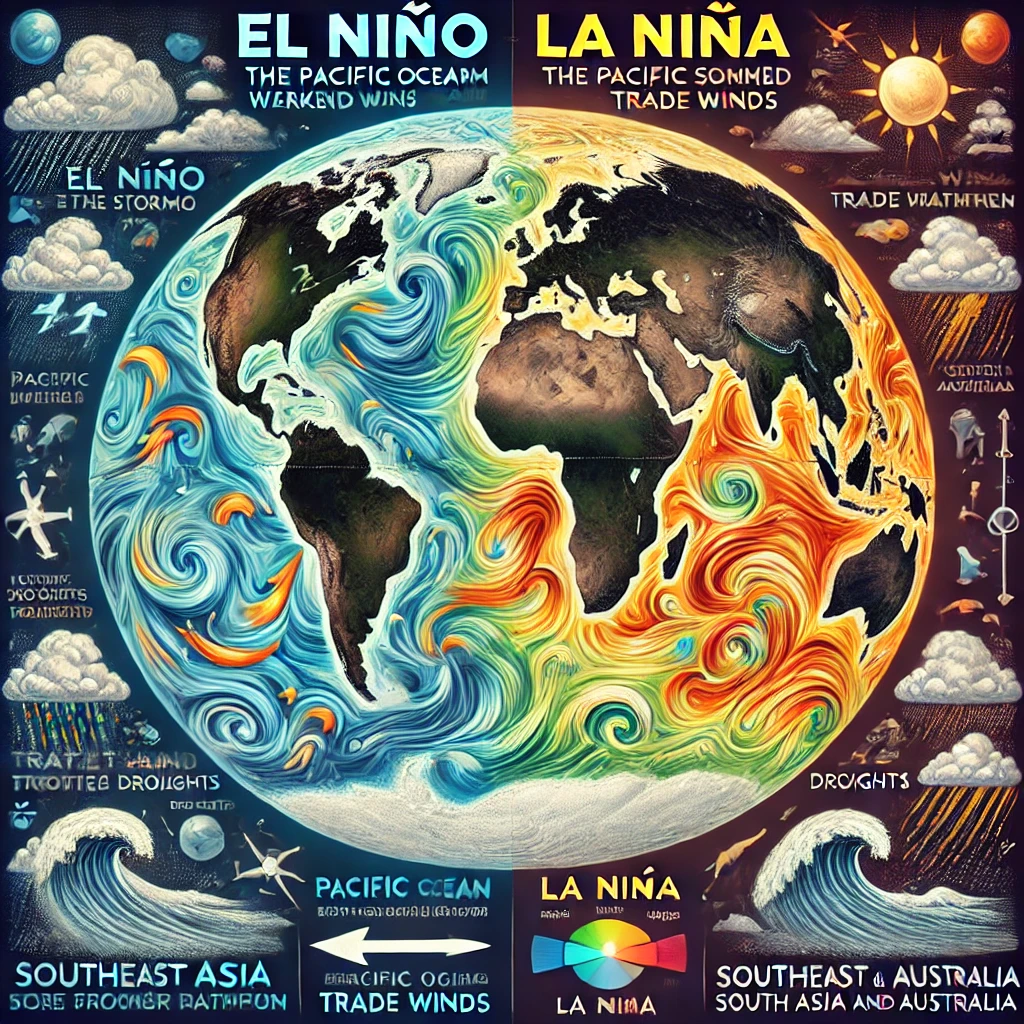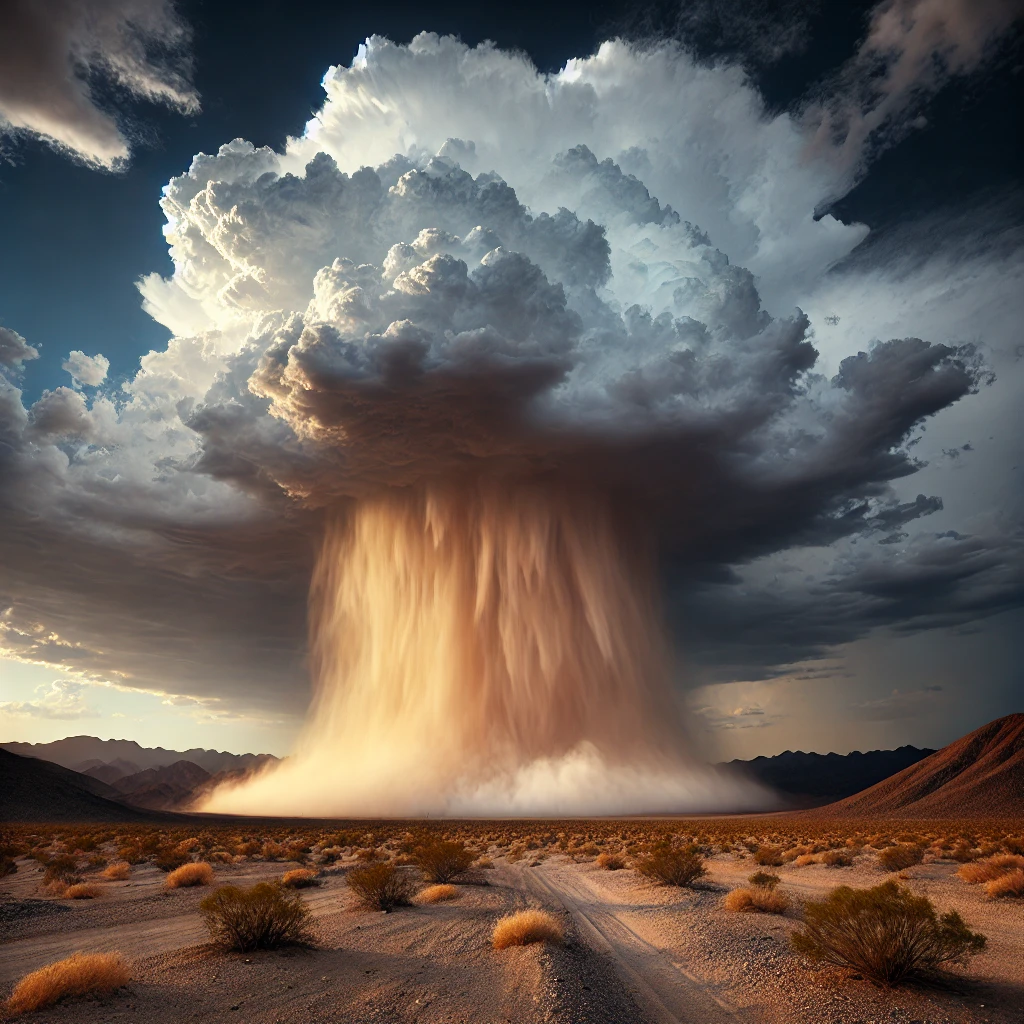El Niño and La Niña: How These Climate Phenomena Affect Global Weather Patterns

Introduction:
El Niño and La Niña are two powerful climate phenomena that occur in the Pacific Ocean, significantly impacting global weather patterns. These events are part of a larger climate system known as the El Niño-Southern Oscillation (ENSO). While both are driven by variations in sea surface temperatures and atmospheric conditions, they have opposite effects. Understanding El Niño and La Niña is critical for predicting and preparing for shifts in weather, agricultural productivity, and even the economy.
What is El Niño?
El Niño refers to the warming of sea surface temperatures in the central and eastern Pacific Ocean near the equator. This phenomenon typically occurs every 2 to 7 years and can last for several months. During an El Niño event, the trade winds, which normally blow from east to west, weaken or reverse direction. This shift allows warm water to move eastward, disrupting normal weather patterns.
Effects of El Niño on Global Weather
El Niño’s impact on global weather can be dramatic and far-reaching, including:
- Increased Rainfall in the Americas: El Niño often brings heavy rains and flooding to regions such as the western coasts of North and South America. Countries like Peru, Ecuador, and the western U.S. may experience extreme rainfall and mudslides.
- Droughts in Southeast Asia and Australia: While the Americas face wetter conditions, El Niño causes dry spells in countries like Indonesia, the Philippines, and Australia. These droughts can lead to crop failures, wildfires, and water shortages.
- Warmer Global Temperatures: El Niño events contribute to global warming, often leading to record-breaking temperatures. The increased heat can exacerbate drought conditions and lead to heatwaves in various parts of the world.
- Disruption of Marine Ecosystems: Warmer ocean temperatures during El Niño can affect marine life, particularly in the Pacific Ocean. Fish populations may decline, affecting fishing industries and local economies. Coral bleaching also becomes more prevalent due to warmer waters.
What is La Niña?
La Niña is the counterpart to El Niño and is characterized by cooler-than-normal sea surface temperatures in the central and eastern Pacific. During La Niña, the trade winds strengthen, pushing warm water farther west and allowing cooler water to rise to the surface in the eastern Pacific. Like El Niño, La Niña typically occurs every few years and can last for up to two years.
Effects of La Niña on Global Weather
La Niña’s influence on weather patterns is often the opposite of El Niño’s, leading to:
- Drier Conditions in the Americas: La Niña generally brings drier and cooler conditions to the southern U.S. and parts of South America, including Brazil and Argentina. These areas may face droughts, reduced crop yields, and water shortages.
- Increased Rainfall in Southeast Asia and Australia: In contrast to El Niño, La Niña tends to cause heavier rains in Southeast Asia, Australia, and India. This can lead to flooding, particularly during monsoon seasons.
- More Active Atlantic Hurricane Season: La Niña is associated with stronger trade winds and cooler ocean temperatures, which tend to suppress wind shear in the Atlantic. This allows more hurricanes to form, often leading to more destructive storm seasons in the Atlantic Ocean.
- Colder Winters in North America: La Niña can lead to colder-than-average winters in parts of the northern U.S. and Canada. This can cause disruptions in daily life, increase heating costs, and place stress on energy systems.

You May Also Like: The Mystery of Aurora Borealis: How the Northern Lights Are Created
The Global Impacts of El Niño and La Niña
El Niño and La Niña are not just localized events; their effects ripple across the globe, influencing agriculture, economies, and ecosystems. The extent of their impact can vary based on the strength of the event and other atmospheric conditions.
Agricultural Impacts
Agriculture is highly sensitive to changes in weather patterns, making El Niño and La Niña significant disruptors. For example:
- El Niño can reduce rice production in Southeast Asia due to drought, while increasing wheat yields in the U.S. Midwest thanks to milder winters.
- La Niña may boost agricultural production in Australia and Argentina due to increased rainfall, but it can also lead to crop damage in the southern U.S. due to drought.
The unpredictability of these climate events makes it difficult for farmers and governments to plan effectively, often leading to food shortages or price spikes.
Economic Impacts
The economic consequences of El Niño and La Niña are vast, affecting sectors such as agriculture, fishing, insurance, and energy. For instance:
- El Niño can cause billions of dollars in damage due to floods, storms, and crop losses. Coastal industries, like fishing, are particularly vulnerable as fish migrate to cooler waters.
- La Niña may increase heating costs in colder regions and lead to insurance claims from hurricanes or floods. Droughts can also affect hydroelectric power generation, leading to energy shortages.
In some cases, countries may benefit from these phenomena. For example, warmer winters during El Niño can reduce heating costs in parts of North America, while La Niña may improve agricultural yields in certain regions.
Environmental Impacts
Both El Niño and La Niña contribute to ecological stress:
- El Niño events can lead to coral bleaching, harm fish populations, and disrupt ecosystems that depend on stable ocean temperatures.
- La Niña can lead to excessive rainfall, which may cause landslides and erosion, damaging habitats and biodiversity.
Moreover, shifts in weather patterns due to ENSO events can exacerbate the effects of climate change, making ecosystems more vulnerable to extreme weather conditions.
Predicting and Managing El Niño and La Niña
Advances in climate science have made it possible to predict El Niño and La Niña months in advance, giving governments, businesses, and individuals time to prepare. Organizations like the National Oceanic and Atmospheric Administration (NOAA) monitor sea surface temperatures and atmospheric conditions to provide early warnings.
While these predictions can mitigate some of the impacts, managing the consequences of these phenomena remains a challenge. Efforts to adapt to the changing climate, such as improving infrastructure, creating more resilient agricultural practices, and developing early warning systems, are essential.
Conclusion
El Niño and La Niña are powerful climate phenomena that have far-reaching effects on global weather patterns. From altering rainfall distribution to increasing the intensity of natural disasters, these events can significantly impact economies, ecosystems, and human life. As our understanding of these phenomena grows, so does our ability to predict and mitigate their effects. However, with climate change intensifying extreme weather events, the world must continue to adapt to the challenges posed by El Niño and La Niña in the years to come.
Also Visit: Cybersecurity Risks: Protect Yourself from Online Threats



1 comment